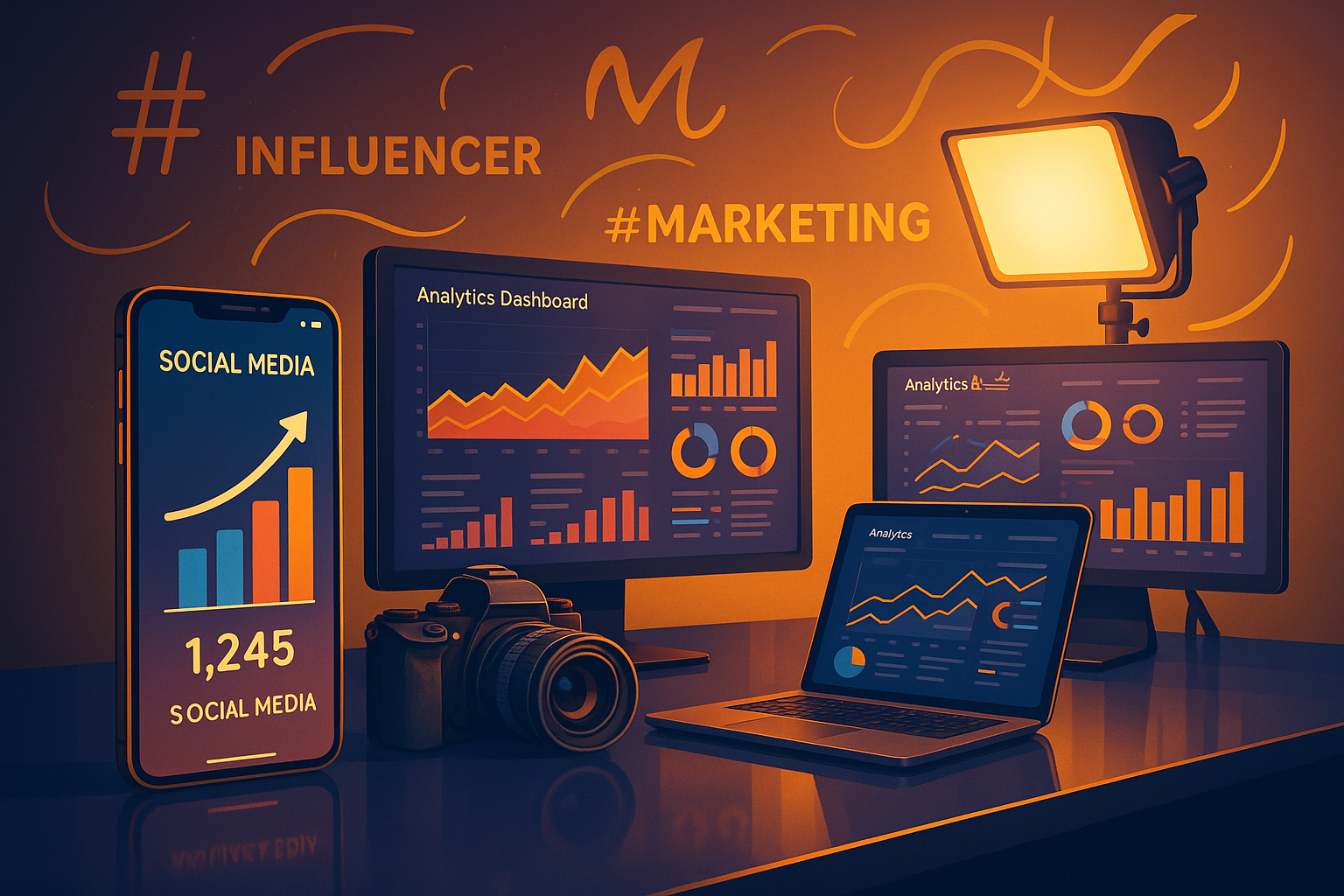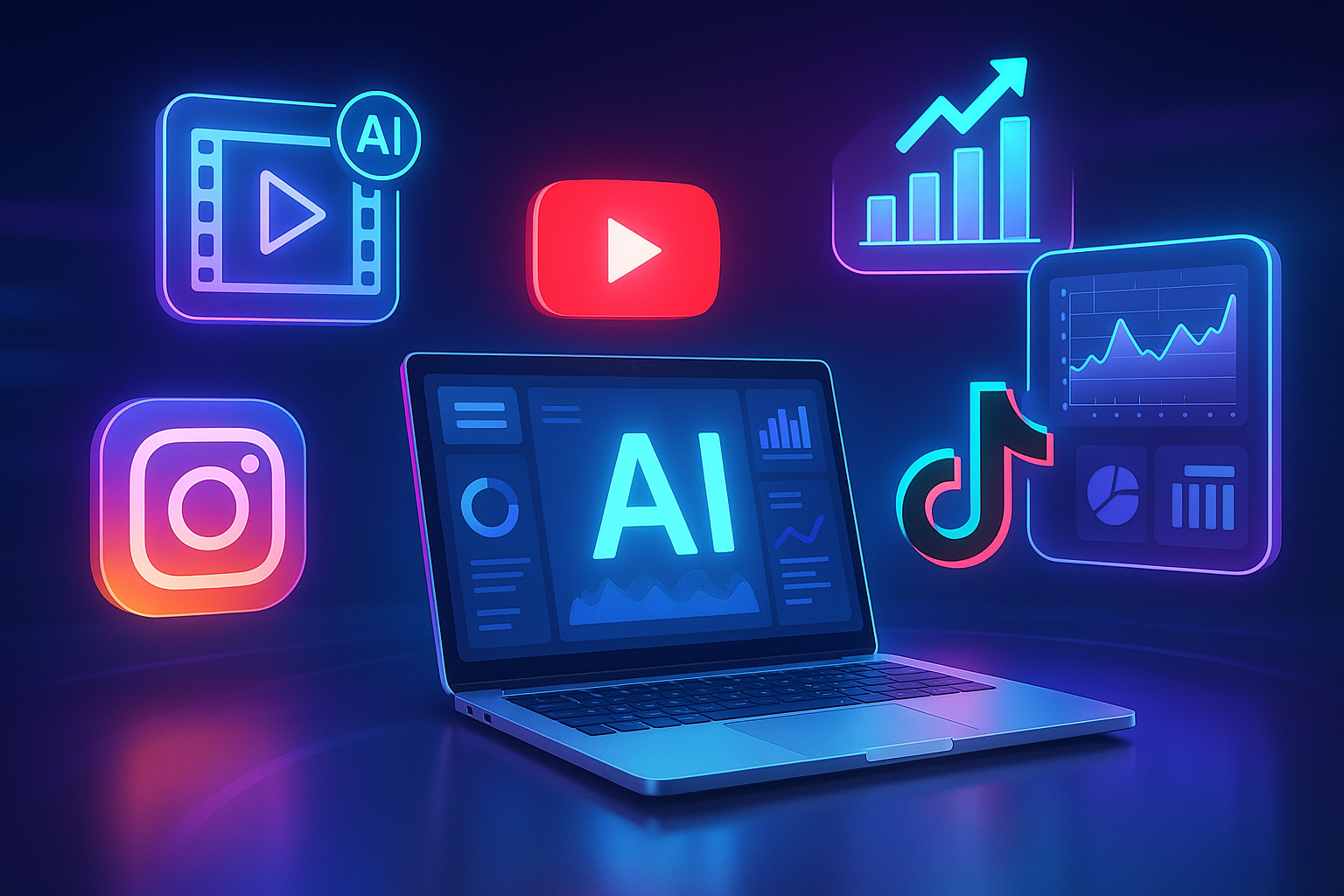Marketing isn’t what it used to be. The days of big-budget TV commercials and billboard takeovers are still around, but the real action? It’s happening on your phone screen.
Welcome to the era of influencer marketing where creators with a camera and a voice are pulling in brands, followers, and serious revenue, all while reshaping how businesses connect with people.
Let’s break down how influencers are flipping the marketing script.
What Is Influencer Marketing, Really?
At its core, influencer marketing is about trust. Brands partner with people who already have an audience and more importantly, influence over them. Instead of selling directly, they let influencers do the talking.
Think of it like this: would you rather trust a random shampoo ad or your favourite YouTuber who’s been using it for months? Exactly.
From Creators to Mini-Media Companies
Influencers aren’t just posting selfies anymore. They’re running businesses. Some have teams videographers, editors, managers, even PR reps. What started as passion projects have become personal brands with multi-platform reach.
Whether it’s TikTok, Instagram, YouTube, or even LinkedIn, influencers now hold the power to shape trends, start conversations, and spark purchases. That’s a level of marketing muscle you can’t ignore.
Why Are Brands Obsessed With Influencers?
Because it works. Here’s why brands are pouring money into influencer marketing:
- Authenticity sells. Influencers speak like real people, not scripted actors.
- Targeted reach. Brands can find exactly who they want niche audiences, local groups, or global youth.
- High engagement. Followers don’t just watch; they comment, like, share, and buy.
- Content goldmine. One collaboration can produce dozens of pieces of branded content.
It’s no longer about reaching the most people; it’s about reaching the right people and influencers are experts at that.
How Influencers Are Earning Based on Their Audience
Now to the juicy part how much do influencers actually make?
It depends on several factors: platform, niche, engagement rate, and of course, audience size. Here’s a quick snapshot:
| Follower Count | Estimated Earnings per Post |
|---|---|
| Nano (1K–10K) | ₹2,000–₹10,000 |
| Micro (10K–100K) | ₹10,000–₹50,000 |
| Mid-tier (100K–500K) | ₹50,000–₹2,00,000 |
| Macro (500K–1M) | ₹2,00,000–₹5,00,000 |
| Mega (1M+) | ₹5,00,000+ |
Some full-time influencers even pull in 7-figure incomes annually from a mix of brand deals, affiliate marketing, merchandise, online courses, and speaking gigs.
Pro tip? Engagement matters more than follower count. A 50K follower account with a loyal audience might outperform a 500K account with ghost followers.
Influencers Are More Than Just Billboards
Unlike traditional celebrities, influencers build two-way relationships. They reply to DMs, answer comments, host Q&As, and even involve followers in decision-making.
This parasocial bond (where followers feel personally connected) drives loyalty. When they recommend something, it doesn’t feel like an ad it feels like a friend’s suggestion.
And that’s marketing gold.
Influencers Are Driving Real Business Results
A few stats you should know:
- 49% of consumers rely on influencer recommendations.
- ROI for influencer campaigns can be up to 11x higher than traditional ads.
- 71% of marketers say influencer quality is more important than reach.
From launching new products to driving app installs, influencers aren’t just helping businesses grow they’re becoming central to the entire marketing funnel.
The Rise of Micro and Nano Influencers
Don’t let the numbers fool you. You don’t need a million followers to make an impact.
In fact, micro (10K–100K) and nano (1K–10K) influencers often drive higher engagement and deeper trust. Their audiences are tight-knit, highly interactive, and see them as real people, not digital celebrities.
For brands, that means better conversion rates and more authentic storytelling.
What This Means for Brands in 2025
Influencer marketing is no longer optional it’s essential. And it’s evolving fast:
- AI tools are helping brands match with the perfect influencers.
- Performance-based collaborations are replacing flat-fee deals.
- Long-term partnerships are becoming the norm, not one-off posts.
To thrive, brands need to think like creators. Authenticity over perfection. Community over clicks.
Conclusion
Influencers have changed the marketing game by turning content into connection and followers into fans. Their ability to blend authenticity, reach, and trust makes them invaluable in today’s digital-first world.
If you’re a brand, it’s time to stop thinking of influencers as just promoters. They’re partners sometimes even more powerful than your in-house marketing team.
And if you’re an aspiring influencer? The opportunity is real. Build your audience, stay honest, and remember: your influence is your value.
FAQs
1. How much can a beginner influencer earn in India?
A nano-influencer (1K–10K followers) can earn anywhere from ₹2,000 to ₹10,000 per post, depending on engagement and niche.
2. Which platform is best for influencer marketing?
Instagram and YouTube remain the most popular, but LinkedIn is rising for B2B, and TikTok is dominating Gen Z campaigns.
3. Do brands still use celebrities, or just influencers now?
Both. However, influencers often provide better ROI due to their relatability and stronger engagement with followers.
4. Can micro-influencers really drive sales?
Absolutely. Micro-influencers often convert better due to tighter audience trust and targeted niche content.
5. What kind of brands use influencer marketing?
All kinds from skincare to tech, real estate to finance. If there’s an audience, there’s an influencer for it.







